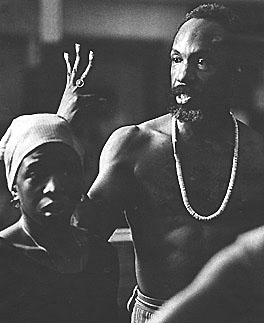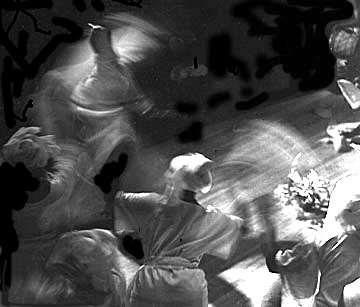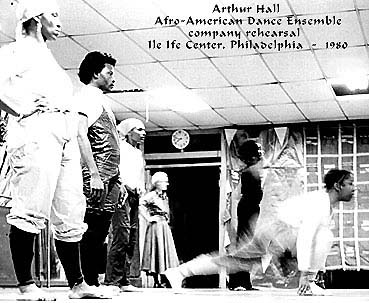"I had danced a little in school, even won some contests," he recalled in a soft voice, "but I didn't know any technique. I joined the school and later went on to the Katherine Dunham School in New York. At that time I wanted to do Indian dancing, but I realize now that I was searching for something I could dedicate myself to."
 [ Arthur Hall spent two years in the Army, performing and doing choreography for a special services troupe which toured the bases of Germany and the occassional German beer hall, most notably in Heidelberg. Before the Army, in 1953,] Hall ... ran into a young graduate
student from Ghana Saka Acquaye, who knew the music and lore of
his own country, as well as some of the neighboring states, and
began to show Hall how the people of Ghana danced, moved and
thought.
[ Arthur Hall spent two years in the Army, performing and doing choreography for a special services troupe which toured the bases of Germany and the occassional German beer hall, most notably in Heidelberg. Before the Army, in 1953,] Hall ... ran into a young graduate
student from Ghana Saka Acquaye, who knew the music and lore of
his own country, as well as some of the neighboring states, and
began to show Hall how the people of Ghana danced, moved and
thought.
"I studied with him three years, and during this time I decided to dedicate myself to keeping this lore in America. After all, there are 20 million black people here, and I think we must know something of our culture. Our people are not aware of their culture and heritage. I saw in the dances a chance to bring grandeur back into blackness," he said.
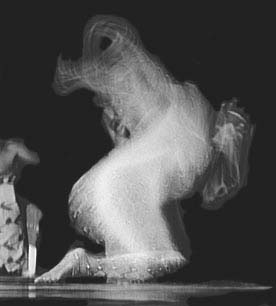 Starting a dance company, developing a repertory, designing and
making costumes, finding dancers and musicians and keeping them
together is a job so staggering that ballet companies have tried
it only with enormous financial reserves and corps of experts.
Starting a dance company, developing a repertory, designing and
making costumes, finding dancers and musicians and keeping them
together is a job so staggering that ballet companies have tried
it only with enormous financial reserves and corps of experts.
Hall had to do it alone, with almost no funds and without much prospect for success. But Hall carried to his project not only a strong desire to perform, but an evangelist's dedication to the value of his own work.
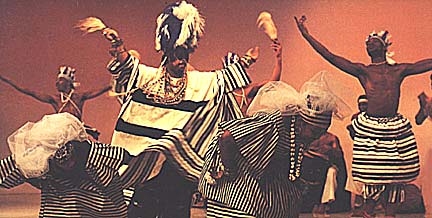
Looking back on those discouraging first months, Hall concedes that his ideas were ahead of their time. "It was too soon," he said, "but ideas about Africa began to change, and as they changed, we found chances to dance.
"Of course, our problems were that we had no place to rehearse. We lacked the facilities for training dancers and musicians, and while we found many who wanted to join us, they often lacked training, some couldn't afford formal lessons in schools."
There remained a problem of orientation, too. "Our people are looking in history books, but we don't see us. We want to associate with ballet companies, but we can't. We've mutated. We always had the problem of what to dance and asked the question, 'Where can we go?'"
Having started at the bottom, the only answer seemed to be "up." Hall became the teacher of regular classes, and the city Recreation Department offered the center at 44th and Haverford Avenue as a rehearsal hall. The company works there two nights a week and sometimes at the [Church of the Advocate, Father Paul Washington, rector].
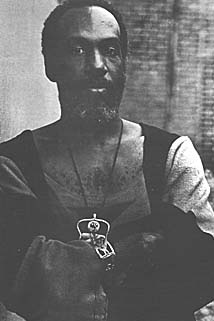 Opportunities came. The troupe was engaged for the Theatre of the
Living Arts production of Beclch, a play that still rouses
an argument when mentioned. And the city's Festival of the Arts
last spring provided a showcase for outdoor performances at the
Museum of Art.
Opportunities came. The troupe was engaged for the Theatre of the
Living Arts production of Beclch, a play that still rouses
an argument when mentioned. And the city's Festival of the Arts
last spring provided a showcase for outdoor performances at the
Museum of Art.
Now, as the city's schools seek a curriculum that meets the needs of the Negro population, Hall's dancers are being used in school assembly programs. The schools are exploring wider use of the troupe in a program of African culture to illustrate traditions in music and dance.
And the performance at the Nigerian embassy has had its results, too. Some interest has been expressed from Washington, enough to encourage these Philadelphians on their way to becoming ambassadors of African culture.
